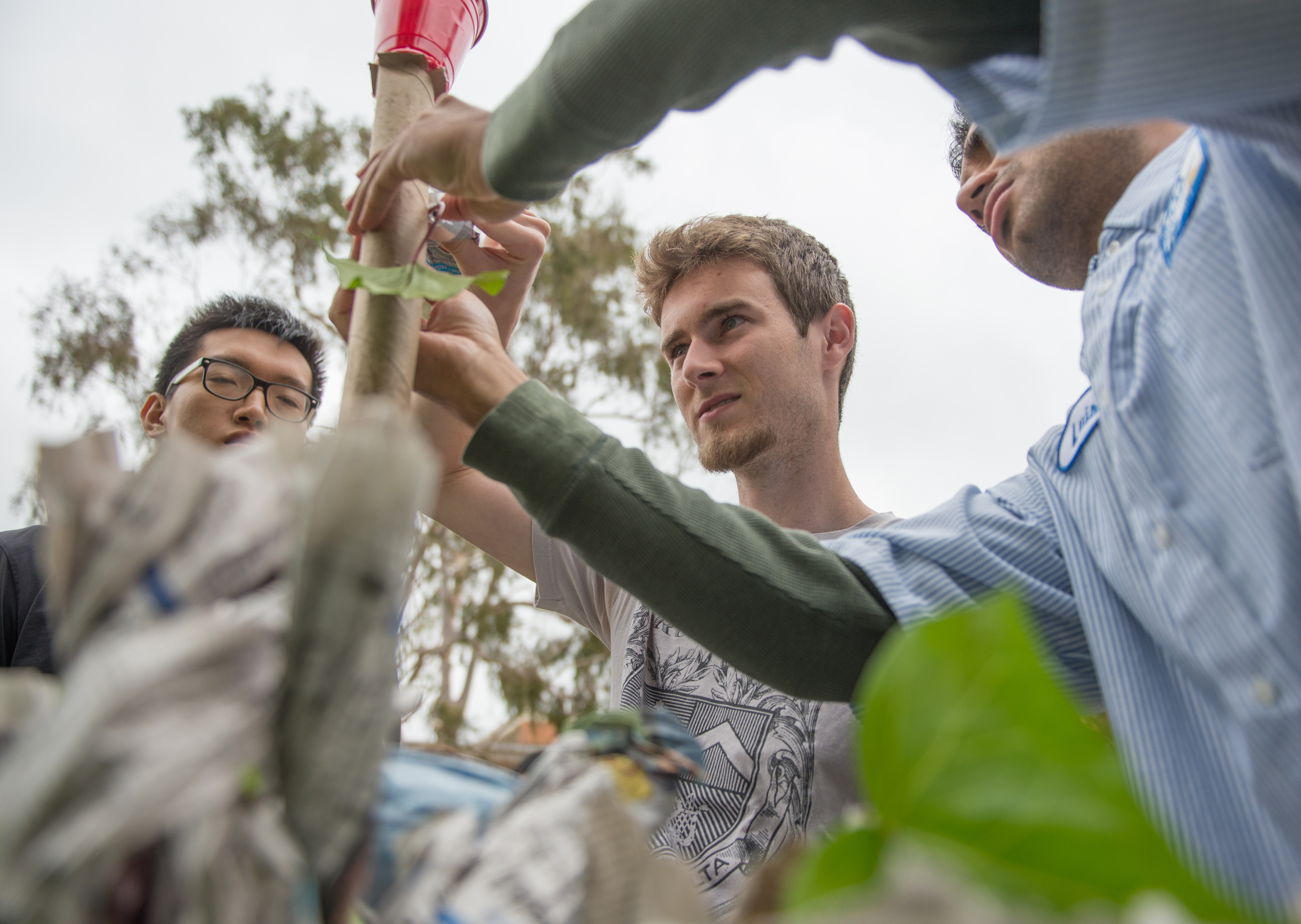Honors 44 turns trash into art as students examine waste management

In Honors Collegium 44, professor Maite Zubiaurre teaches students about the subject of trash. The course examines waste management, its cultural significance and its environmental consequences through an artistic lens.
By KELLYANNE TANG
June 6, 2013 12:22 a.m.
Pink bubble wrap, plastic water bottles, empty cereal boxes and the staff shirt of a Facilities Management employee were strewn across the lawn as students gathered around a UCLA garbage bin.
For students taking Honors Collegium 44, Society of Excess: On Waste, Consumer Culture and Environment, these were the materials for their final assignment.
Trash is the focus of the new course taught by Maite Zubiaurre, a professor in the UCLA Department of Spanish and Portuguese. The course examines trash management, its cultural significance and its environmental consequences through an artistic lens. Weeks of exploring different components of waste through art culminated in a final project in which students made an art installation from a garbage bin and trash from their homes.
“Trash is a taboo subject in many ways,” Zubiaurre said. “It is invisible, the only thing we know and really the only thing we care about is that we leave it at our curbside and it goes to the land of away.”
Although the subject is far from her main field of study, Zubiaurre said she has been obsessed with the afterlife of trash since she was a child. Her interest developed as she explored the Internet and wondered about the fate of cyber debris like old websites. This curiosity led to her fascination with waste management in both the real and virtual worlds. She said teaching this course is part of her larger project of writing a book on the cultural aspects of trash.
Teaching an honors collegium course, Zubiaurre has the freedom to offer students an interdisciplinary perspective, exposing them to a variety of materials including poems, scholarly articles, literature, films and visual art pieces. Zubiaurre said that while environmental issues are at the heart of the course, she approaches it from a cultural and artistic perspective.
“Art was a huge part of class,” said Amelia Yates, a second-year environmental studies student. “We looked at pictures of actual dumpsters that were decorated like Louis Vuitton bags. We looked at people who collect plastics from the beach and who make amazing art projects from them. There are so many ways to be artistic with trash.”
Zubiaurre said artistic expression is an important way of making the gravity of society’s excessive wastefulness visible to the public and teaching them about the social and environmental consequences. She said she approaches the subject from several different perspectives which make up the different units for the class.
The course is broken down into four different facets of waste: the landfill, the conjunction of trash and gender, e-waste, and the role of trash in cultural studies, artistic expression and video games. Zubiaurre said students get to play a very hands-on role in their learning, developing their own research projects throughout the course.
Yates used photography to document her research of waste management at three different levels: in space, at her local transfer station and in her home. She said in the process of making her project, she and her family were inspired to learn more about the environmental consequences of waste and to alter their daily lifestyle to reduce their own wastefulness.
Zubiaurre described other projects including a student who made and wore a dress out of trash and documented people’s reactions and another who used trash in her home to make lamps and shoe racks. She said students gained insight into the attitude of society on garbage as well as the artistic and practical potential of discarded materials.
These course-long research projects are what made the class a valuable experience for second-year economics and statistics student Paulina Hlavacek.
“Because people were allowed to do their own projects, they were able to bring (in) their own interdisciplinary thoughts about trash,” Hlavacek said. “It’s something that most classes don’t let us do.”
Student collaborated on their final project for the course on Tuesday. The project involved decorating a garbage bin, provided by the school, with pieces of trash from their dorm rooms and apartments. Yates said the students hope their art evokes a reaction from other students on campus.
She said they not only want people to see the beauty in trash in terms of its cultural significance but also to feel inspired to reduce their own environmental impact.


